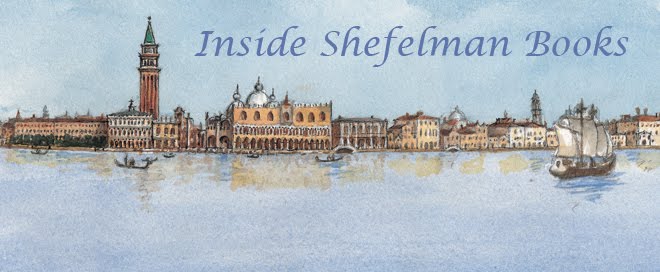
In Johnny Tremain Esther Forbes' characters leap off the page and into your life. Even the baby in the cradle and the horse Johnny rides have character. How does the author do it? By both showing and telling and by giving each one a backstory, including the baby and the horse. Johnny is an apprentice silversmith living in the home of his master with two other apprentices. In the opening scene the mistress of the house has called the boys to get up in the morning. Here is how Esther Forbes introduces him:
"Johnny Tremain was on his feet. He did not bother to answer his mistress. He turned to the fat, pale, almost white-haired boy still wallowing in bed.
'Hear that, Dove?'"
Already we know that Johnny is an energetic, bossy boy who knows his own worth.
As for backstory, Forbes lets Johnny tell his master's daughter after she says:
"'You never speak of your mother, Johnny. She hadn't been dead more'n a few weeks when you first came here.'"
There follows a heartfelt story of his mother and how he came to be an apprentice.

The Bronze Bow has the most magnificent ending of any book, either for children or adults, that I have ever read. Daniel Bar Jamin wants only to rid Israel of the Romans to revenge the death of his parents and the resulting illness of his sister. His hatred consumes him and he joins an outlaw band. At that time there was a Rabbi in Capernaum teaching love. Daniel resists until Jesus heals his sister and opens his eyes. Much to Daniel's rage, she had fallen in love with a Roman soldier who was being sent back to Rome. Here, in part, is the final scene:
Already we know that Johnny is an energetic, bossy boy who knows his own worth.
As for backstory, Forbes lets Johnny tell his master's daughter after she says:
"'You never speak of your mother, Johnny. She hadn't been dead more'n a few weeks when you first came here.'"
There follows a heartfelt story of his mother and how he came to be an apprentice.

The Bronze Bow has the most magnificent ending of any book, either for children or adults, that I have ever read. Daniel Bar Jamin wants only to rid Israel of the Romans to revenge the death of his parents and the resulting illness of his sister. His hatred consumes him and he joins an outlaw band. At that time there was a Rabbi in Capernaum teaching love. Daniel resists until Jesus heals his sister and opens his eyes. Much to Daniel's rage, she had fallen in love with a Roman soldier who was being sent back to Rome. Here, in part, is the final scene:
"(Daniel) flung himself out the doorway - and stopped.
Across the street the Roman soldier stood alone under the broiling sun.
Haltingly, Daniel walked, not after Jesus, but across the road, till he stood before the boy. He had to try twice before the words would come. "My sister will get well," he said, his voice harsh. "The fever has left her...I think she would want to say good-bye to you...Will you come into our house?"
Here is total character transformation. Thrilling!
Rosemary Sutcliff adapted The Iliad and The Odyssey, and, in my opinion, outdid Homer, with lots of help from the illustrator, Alan Lee, who is also an inspiration to Tom. Sutcliff is best known for her historical novels set in Roman Britain, notably Eagle of the Ninth, another favorite of mine. In all her writing she brings ancient times to full life.

TOM: Mr. Popper's Penguins is my current favorite. I just read it for the first time because our son Karl is the storyboard artist for a film that starts shooting in October, starring Jim Carey as Mr. Popper and many penguins. W.C. Fields once said, "Never work with children or animals," but he didn't know Jim Carey! Here's Karl, meeting the talent.
Across the street the Roman soldier stood alone under the broiling sun.
Haltingly, Daniel walked, not after Jesus, but across the road, till he stood before the boy. He had to try twice before the words would come. "My sister will get well," he said, his voice harsh. "The fever has left her...I think she would want to say good-bye to you...Will you come into our house?"
Here is total character transformation. Thrilling!
Rosemary Sutcliff adapted The Iliad and The Odyssey, and, in my opinion, outdid Homer, with lots of help from the illustrator, Alan Lee, who is also an inspiration to Tom. Sutcliff is best known for her historical novels set in Roman Britain, notably Eagle of the Ninth, another favorite of mine. In all her writing she brings ancient times to full life.

TOM: Mr. Popper's Penguins is my current favorite. I just read it for the first time because our son Karl is the storyboard artist for a film that starts shooting in October, starring Jim Carey as Mr. Popper and many penguins. W.C. Fields once said, "Never work with children or animals," but he didn't know Jim Carey! Here's Karl, meeting the talent.






